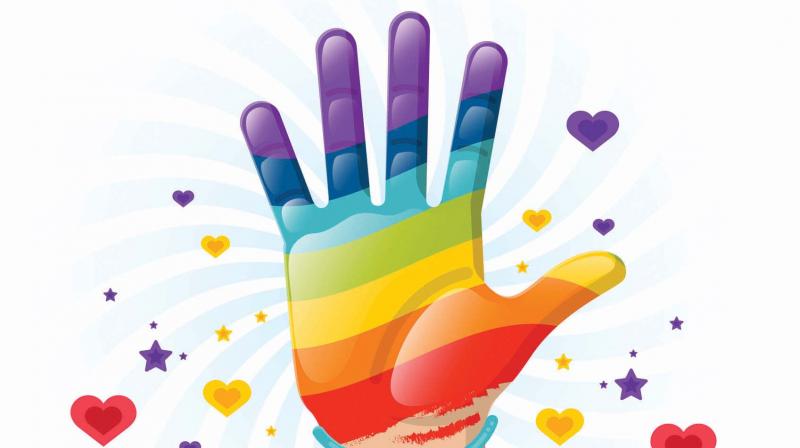Are rights the best way to correct wrongs?

The September 6 Supreme Court judgment decriminalizing sex between consenting adults of the same sex is astonishing, fabulous, and wonderful. Reading down Section 377 of the Indian Penal Code which had been formulated in 1864 attempts to correct centuries of legal and social wrong. And now the conversation is all about getting rights the right to marriage, adoption, etc. for the LGBTQ community in India. But as we enter 2019, I want to ask a question about this trend: Are rights the best way to correct wrongs?
Some people would consider this question a no-brainer. Of course wrongs must be countered by rights. We have to allow anyone to get married if they want and to adopt children if they’d like. All citizens must have access to equal rights under the law. In general, I think this sentiment is absolutely correct – the law should not discriminate amongst its citizens. But again, are rights the proper way to ensure non-discrimination?
Take, for example, the Supreme Court judgment in Section 377. The judgment only reads down the law rather than abolishing it altogether. What this means is that certain sections of 377 are still active. These include sex with a minor of the same sex (rape), and sex with non-humans (bestiality). Any rights that might accrue to same-sex couples in the wake of the September 6 judgment will not attach, say, to people having sex with animals.
Again, this might be absolutely fine and correct. After all, why should the State give rights to people who want to have sex with animals? We cannot know what the animal might want, and in any case, the Constitution of India cannot be interpreted as providing rights to animals as well. But perhaps the issue here is not with the question of animals but rather with the issue of rights itself. Can the Court bestow rights on a group without marking a boundary beyond which those rights will not extend? Let us tweak the 377 scenario a little bit to make this question clearer: would the Court bestow rights on threesomes? On people in orgies?
The answer probably for both supporters and detractors of the 377 judgment is no. But why is this so? What has happened to the idea that the State must allow all its citizens equal rights under the law so long as no violence is being committed?
But this is precisely the problem with the discourse of rights. It always demands rights for itself for its own community of people who are joined together by a characteristic that might seem essential to some and random to others. There is always a door to be shut behind this community so that others are not also granted access to these rights. This is the kind of exclusionary behaviour that the presumptively heterosexual law has been perpetrating for centuries. So now why should the queer community follow suit?
Why can we not say, for instance, that we do not want rights? That no one’s access to legal affordances should be blocked by who one has sex with? That so long as there is no violence committed, it is not the business of the State who we have sex with today, tomorrow, or even two days from now? We do not say this because we are in thrall to the language of rights. Perhaps there is no way of getting out of this language. Perhaps there is no other framework that we can think of in which people can be afforded equality no matter what their sexual proclivities.
But then again, maybe there is. One of the glaring omissions in the September 6 judgment on Section 377 is that it did not allude explicitly in the main text to a single Indian author or tradition. All its examples about homosexuality were drawn from the trials of Oscar Wilde or from Shakespeare’s plays or from the writings of John Rawls. No Vatsyayana, no Amir Khusro, no Meerabai, no Khajuraho, no Mir Taqi Mir, no Konarak, no Bulleh Shah, no Ismat Chughtai. But every one of these people and sites stands testimony to India’s longstanding comfort with and celebration of sexual desires without the language of rights. None of these people have named their desire as heterosexual or homosexual or bisexual or transgendered or anything other than desire. And none of them have sought for their own desire protections that are being denied to those who might have different desires. Theirs is not a language of protection of the self under the law but rather of transgression of the law in order to protect all selves. A quick example of this is that alm
ost all the sculptures engraved in detail on the temple walls of Khajuraho depict scenes of sexual intercourse that are currently illegal under the Indian Penal Code.
We remember, of course, that we have inherited the IPC from the British. So perhaps we can now come up with a Khajuraho Penal Code within which to protect all desires for all people? Perhaps we can create a framework within which desires are not tied to rights because rights will always involve marginalizing someone. In 2019, instead of rushing to do what heterosexual society has always asserted should be the norm of desire – monogamous coupledom and children – let us invent new ways of being in the worlds of desire. The interesting thing is that these new ways turn out also to be very old.
(Madhavi Menon is Professor of English at Ashoka University, and the author, most recently, of Infinite Variety: A History of Desire in India)

